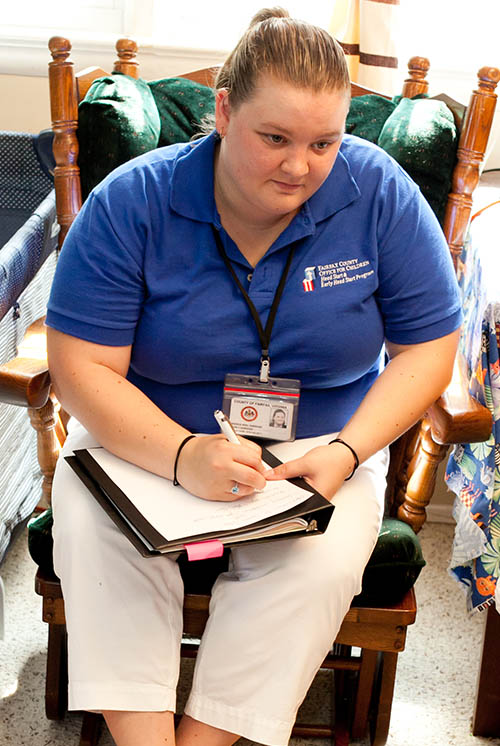Staff use jottings as quick reminders of things they have observed. These jottings tend to have short phrases or sentences that describe a single event or interaction; for example, "Matthias stacks three large foam-covered blocks, looks at Dad, says 'Bwocks!' "
 Staff use anecdotal notes to document a particular occurrence and typically focus on specific skills, behaviors, or interactions. Staff determine how much detail to include in an anecdotal note. These notes tend to be more extensive than jottings. However, anecdotal notes may start out as jottings, with additional details added later.
Staff use anecdotal notes to document a particular occurrence and typically focus on specific skills, behaviors, or interactions. Staff determine how much detail to include in an anecdotal note. These notes tend to be more extensive than jottings. However, anecdotal notes may start out as jottings, with additional details added later.
Staff use running records to collect detailed narrative information during a specific time frame. They write everything they see and hear, as events and behaviors occur and in the order in which they occur, during the observation period. These narratives are extensive and provide a rich, comprehensive view of children. However, they require more dedicated time for stepping back, observing, and writing than staff may have while caring for children, or during a home visit or group socialization. Running records may be useful for a program supervisor to collect as part of ongoing staff support or if there is a specific issue with a child. When a teacher in a classroom uses this method, consider ways to maintain the 1:4 staff-child ratio (or 1:3 ratio for a group size of nine) and ensure the entire group is effectively covered and supervised while the teacher is engaged. Programs may want to have additional staff available for this purpose.
Regardless of which type of written observation is used, the recorded information needs to be accurate, objective, and provide an unbiased view of the child or children being described.
Read more:
Resource Type: Article
National Centers: Early Childhood Development, Teaching and Learning
Last Updated: August 10, 2023
